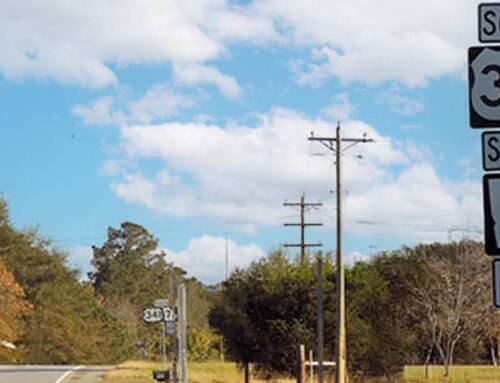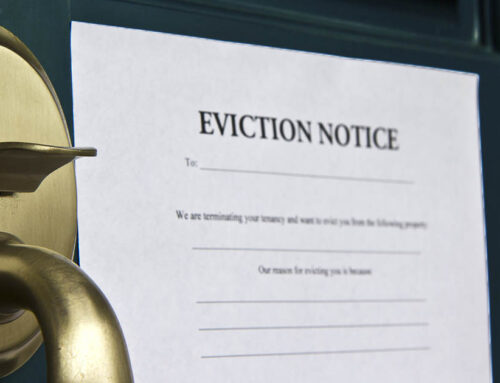People who want to discharge their student loans in bankruptcy confront a variety of challenges. Not only are borrowers required to meet an often tricky standard, but courts are also split in the ways they apply that standard.
In the case of McCoy v. United States, a student loan borrower requested that the U.S. Supreme Court resolve that split to provide a more straightforward path for borrowers to follow. Though the Court refused to do so, the case highlights an essential part of the student loan bankruptcy debate.
The student loan borrower in the case, Thelma McCoy, enrolled in college in her 40s and received her bachelor’s degree. She then obtained a master’s degree in 2006 and a Ph.D. in 2014. By the time she’d completed her education, Mrs. McCoy had borrowed $175,000.
Due to injuries sustained while working towards her Ph.D., the Texas resident said she could not find employment. She consolidated her federal student loans and entered into an Income-Driven Repayment plan, bringing her required monthly payment to $0 based on her low income. Seeing no reasonable likelihood of a change in her financial situation, McCoy filed for Chapter 7 bankruptcy to discharge her student loans, which had grown with interest to approximately $350,000.
Discharging Student Loans in Bankruptcy – A Tale of Competing Standards
The U.S. Bankruptcy Code allows student loan borrowers to discharge their educational debts only after proving that repayment would cause “undue hardship.” Student loan discharge is further complicated because courts are deeply divided on determining what constitutes “undue hardship.”
Most bankruptcy courts employ the so-called Brunner Test, named after the New York bankruptcy case that established a three-part test to determine undue hardship. Under this test, established in 1987, a debtor seeking to discharge student loans in bankruptcy must prove all of the following:
- that [she] cannot maintain, based on current income and expenses, a ‘minimal’ standard of living for herself and her dependents if forced to repay the loans;
- that additional circumstances exist indicating that this state of affairs is likely to persist for a significant portion of the repayment period of the student loans; and
- that [she] has made good faith efforts to repay the loans.
Some bankruptcy courts have adopted an approach that considers the totality of the circumstances of each debtor’s situation. Using this analysis, the court will discharge a borrower’s student loans if their future financial resources are unlikely to cover payment of the student loans while still allowing for a minimal standard of living.
The totality of the circumstances test is applied only by bankruptcy courts in North Dakota, South Dakota, Minnesota, Nebraska, Iowa, Missouri, and Arkansas.
A Failed Attempt at Uniformity
By filing for bankruptcy in Texas, McCoy was subjected to the Brunner Test in proving her case for undue hardship. After being denied the ability to discharge her student loans, she appealed to the 5th Circuit Court of Appeals.
Finally, she sought a final appeal to the U.S. Supreme Court. Her goal wasn’t a wholesale change in the bankruptcy laws, merely a resolution to the inconsistent standards used to prove undue hardship.
Unfortunately, the U.S. Supreme Court declined to hear the case. In doing so, it failed to bridge the gap and allow a uniform standard to apply to this critical issue. As a consequence, the split among the courts remains in place.
For student loan borrowers in states using the totality of the circumstances approach, the road to discharging student loans in bankruptcy continues to look different than for those in jurisdictions using the Brunner Test.
How to Decide Whether to File a Student Loan Bankruptcy
The decision to seek a discharge of your student loans in bankruptcy begins by understanding how your court approaches the issue of undue hardship. The standard your federal circuit uses to determine undue hardship is the lens through which any further analysis must be seen.
Your lawyer should also recognize judges each have unique perspectives, which come through in every ruling and decision. Whereas one judge may apply the standard more favorably to the borrower, others may be less likely to do so.
Ultimately, your chances of winning a student loan bankruptcy discharge depend on the facts of your case, as they are likely to be seen by the judge.
Bankruptcy Isn’t the Only Strategy
It’s tempting to look at bankruptcy as the best way out of your student loan problem, but that’s not always the case.
Betsy McCoy, the borrower in the Texas case, is 63 years old. She is enrolled in an Income-Driven Repayment plan that obligates her to pay $0 each month towards her federal student loans. By her admission, her income is unlikely to increase in the future. Here student loan payment will likely remain at $0 for the duration of her enrollment in Income-Driven Repayment.
Ms. McCoy’s unpaid federal student loan balance will be forgiven after 25 years in Income-Driven Repayment. At that point, she’ll be well into her 80s. Current tax law requires the issuance of a Form 1099 for the forgiven balance, which means she may be required to pay income taxes on that amount.
The prospect of a massive tax debt understandably scares many borrowers, but consider the following:
- the tax laws may change before forgiveness and eliminate the potential “tax bomb”;
- there are ways to exclude forgiven debt from taxable income;
- the bankruptcy laws may change to expand the ability to discharge student loans; and
- federal student loans are discharged on the death of the borrower.
For those reasons, leveraging the benefits of Income-Driven Repayment may be more cost-effective and provide greater certainty of outcome than pursuing a student loan bankruptcy. Talking with an experienced student loan lawyer with significant bankruptcy experience can help you be sure to make the right decision for your long-term financial goals.
ABOUT THE AUTHOR
Meet Jay
 Since I became a lawyer in 1995, I’ve represented people with problems involving student loans, consumer debts, mortgage foreclosures, collection abuse, and credit reports. Instead of gatekeeping my knowledge, I make as much of it available at no cost as possible on this site and my other social channels. I wrote every word on this site.
Since I became a lawyer in 1995, I’ve represented people with problems involving student loans, consumer debts, mortgage foreclosures, collection abuse, and credit reports. Instead of gatekeeping my knowledge, I make as much of it available at no cost as possible on this site and my other social channels. I wrote every word on this site.
I’ve helped thousands of federal and private student loan borrowers lower their payments, negotiate settlements, get out of default and qualify for loan forgiveness programs. My practice includes defending student loan lawsuits filed by companies such as Navient and National Collegiate Student Loan Trust. In addition, I’ve represented thousands of individuals and families in Chapter 7 and Chapter 13 bankruptcy cases. I currently focus my law practice solely on student loan issues.
I played a central role in developing the Student Loan Law Workshop, where I helped to train over 350 lawyers on how to help people with student loan problems. I’ve spoken at events held by the National Association of Consumer Bankruptcy Attorneys, National Association of Consumer Advocates, and bar associations around the country. National news outlets regularly look to me for my insights on student loans and consumer debt issues.
I’m licensed to practice law in New York and California and advise federal student loan borrowers nationwide.
continue reading





